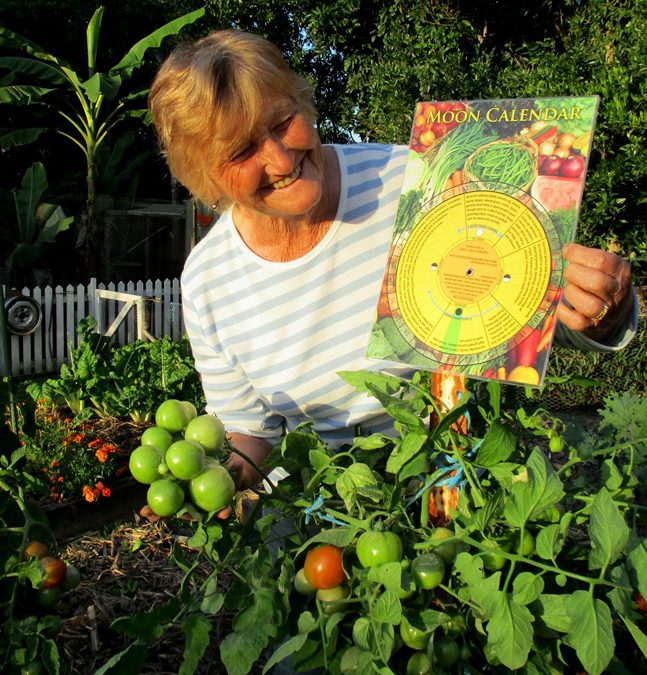Gardening clubs, seed saver groups and even men’s sheds across Australia are fuelling a revival in the ancient practice of gardening by the moon.
“Moon gardening is one of those traditional practices people use to get the most out of growing their own food and it is especially good for beginners,” says Jean Scott, creator of the perpetual Moon Gardening Calendar.
“The focus on healthy eating and food security is encouraging more people to start a garden and since launching our calendar in 2007 we have seen a steady increase in demand for it.”
Talks and classes are being held at garden clubs, community support centres and even men’s sheds at towns around the country as the health benefits of gardening become more recognised. Moon gardening is one of those tools that help first-timers and experienced gardeners get the best out of their efforts.
Jean and her late husband Ray were introduced to moon gardening in the 1970s when they first ventured into commercial vegetable growing. It is based on the rise and fall of moisture in the plants, similar to how the moon influences the tides.
“It really was a saving grace. If planted at the wrong moon phase, certain crops would go to seed too early and be wasted, or seed would be slow to germinate and rot. Planting at the right time meant stronger plants, better disease resistance and better yields,” Jean says.
They developed its use further as they branched out with a plant nursery in the 1990s, north of Cairns.
“When we were propagating in the nursery, taking cuttings at the right moon phase meant a higher strike rate and stronger plants so we weren’t wasting time and effort. Customers also commented how much better our plants did in their gardens than plants purchased elsewhere. The strong start the plants got through moon gardening meant they could handle stress much better when people took them home,” Jean says.
All gardeners can now benefit from their years of experience with the easy-to-use perpetual wheel called the Moon Gardening Calendar. It is a system which divides the lunar cycle into six periods of various lengths to show the best days in the month for different activities. It is adjusted monthly and can be used anywhere in the world, set to the date of the new moon.
Since Ray passed away in December 2016, Jean and her daughter Sheree continue the tradition, making the calendars in Kuranda.
“It’s a lifetime tool. We have remote desert communities using it, garden groups in the Snowy Mountains and commercial growers around the country. We send them to the United States, Britain and Europe, New Zealand and even South Africa,” Jean says. “It’s really exciting to think of all these people planting at the same time to these cycles.”
The calendar provides easy-to-follow directions on the right time to plant root crops or above ground crops, sow seeds and take cuttings, when to fertilise, the best time for pruning and grafting, when to cultivate the ground and even when the fish are more likely to be biting.

